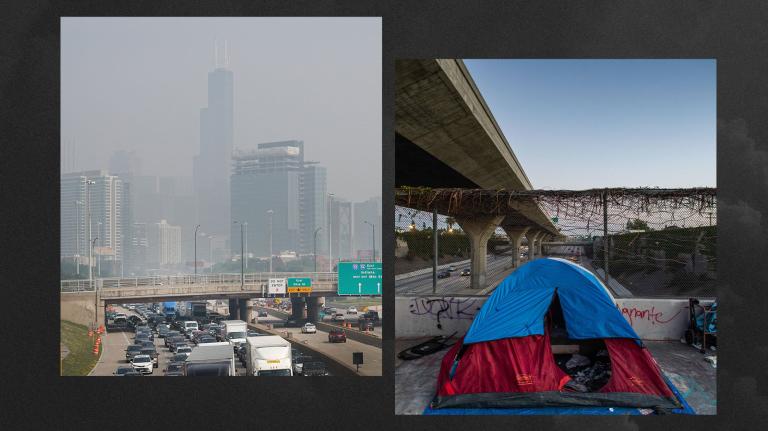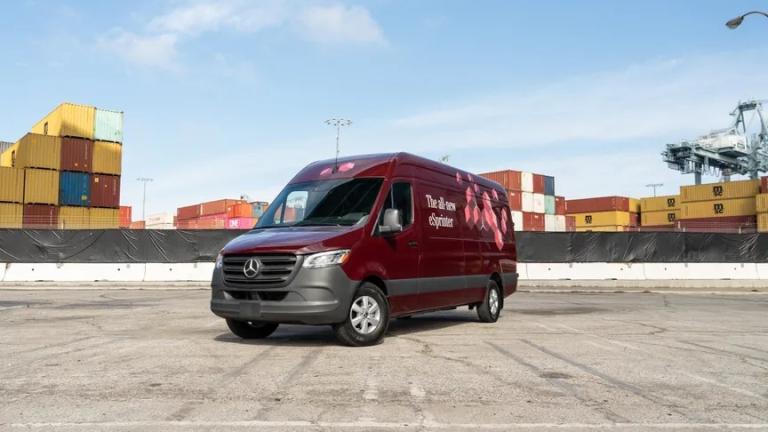The National Electric Vehicle Infrastructure Program, or NEVI, is the Biden administration’s attempt to solve one of the biggest roadblocks to broader electric vehicle adoption: the limited availability of public charging stations. While at present there are just about 140,000 public charging ports available to EV drivers across the nation, President Biden has promised to use NEVI to build out a network of 500,000 public chargers on U.S. roads.
NEVI was created by Congress’ 2021 Infrastructure Investment and Jobs Act, and over the last year the federal government has used it to disburse millions of dollars to states to build out the charging-station network. But the program is intended to achieve other goals as well: It’s one of the first attempts to implement the Biden administration’s commitment to ensuring that at least 40 percent of the benefits of climate and energy funding reach disadvantaged communities. That effort, called Justice40, is one of Biden’s most high-profile environmental justice promises and one that has been plagued by delays and controversies.
Both NEVI and Justice40 are complex and challenging initiatives to implement on their own, let alone simultaneously. The former requires states to build charging stations as quickly as possible to spur faster EV uptake, all while meeting a range of technical and complicated minimum standards. The latter requires that the distribution of those resources benefits communities that are classified as disadvantaged according to a range of demographic and environmental criteria. It’s now up to states to balance the sometimes-competing goals of the two programs.
A new report by a group of environmental and public policy nonprofits and think tanks examines the challenges that have emerged in this effort. Crucially, NEVI requires that states first build charging stations every 50 miles on so-called alternative fuel corridors — highways designated by the federal government for investment in electric, hydrogen, and other fueling stations — and within one travel mile off an exit from the corridors. Since disadvantaged communities are not always in areas that meet these geographic strictures, NEVI’s “strict siting requirements limit how benefits can be delivered to [disadvantaged] communities,” the report noted.
The report also found that since states had less than six months to submit their NEVI plans to the federal government, there were varying and often limited efforts to engage with community groups. Of the 20 states that the report examined, two — South Carolina and West Virginia — did not consult with community groups or hold public meetings at all before submitting their plans for NEVI funding. An additional four states only conducted private meetings with community groups and government agencies, but didn’t solicit feedback from the general public.
“A few months for a completely new program that they have to educate people about and a new bill they have to educate people about — that was a legitimate hurdle,” said Rachel Patterson, the lead author of the report and deputy policy director at the environmental group Evergreen Action.
NEVI funding is being distributed in phases over five years. States are first required to build fast-charging stations every 50 miles along the alternative fuel corridors and within a mile off an exit from an alternative fuel corridor. Once this requirement is met, states will have much more flexibility to use NEVI funding to place charging stations in communities of their choosing.
Patterson said that almost every state official her group spoke with identified the 50-mile requirement as a problem — not just in terms of getting chargers to disadvantaged communities, but in getting them to where they’ll be put to the most use, period. The requirement “practically doesn’t serve where the majority of the population is most of the time, and more so serves this American road trip fantasy that I’m not sure people are really doing with EVs right now,” said Patterson.
Rural states like Wyoming have voiced their objections to the 50-mile requirement. Since NEVI only supports 80 percent of the cost of building charging stations, states have to come up with the remainder. Wyoming officials have said that traffic on the state’s highways and demand for electric charging are unlikely to be robust enough for private companies to want to foot the cost of building even heavily-subsidized stations.
“There’s not going to be enough EVs to break even in five years,” said Loren McDonald, an electric-vehicle consultant based in California’s Bay Area. “There probably should be some flexibility for some of those states.”
Many of the state plans also failed to consider users’ personal safety while charging — a concern that is likely more prevalent for disadvantaged communities. Of the 20 state plans considered in the report, four states did not make any considerations for safety. Other states like Pennsylvania, however, listed lighting, visibility, and regular staffing onsite as key issues.
The states also had different approaches to identifying disadvantaged communities in the first place. While the White House has built a tool to identify communities with high environmental burdens for prioritization under Justice40, the Department of Transportation and the Department of Energy have also built their own tool for identifying Justice40 communities. Although the Federal Highway Administration, which is in charge of distributing NEVI funding, asked states to use the transportation and energy departments’ tool, some states chose to use state-level and federal tools.
“If multiple tools are used simultaneously, more of the population will likely be identified as disadvantaged and so benefits may be less targeted,” the report noted. It also makes it difficult to compare the NEVI program’s outcomes across states.
But Patterson stressed that these challenges are not insurmountable, and NEVI offers community groups, states, and the federal government a chance to find solutions.
“The NEVI program is such a great case study because very rarely are programs going to be written perfectly to comply with Justice40,” said Patterson. “Governments are going to need to do things like reach out to advocates and folks who have been thinking about this for a long time to figure out creative ways to get benefits to people.”



